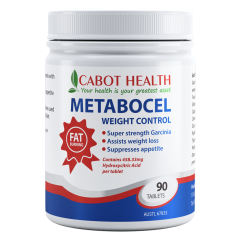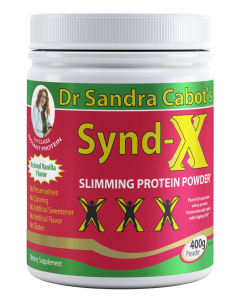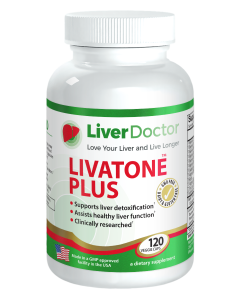

What You Need To Know To Improve Your Metabolism
When we say ‘metabolism’, we are referring to everyday chemical processes our body uses to produce energy. Our metabolic rate is the rate at which our body breaks down food to use as an energy source. Therefore, the more effective or fast your metabolism is, the more energy you have and the better you will feel. Many dieters do not know that while trying to lose weight it is not uncommon to reach a weight loss plateau. This is a time when weight loss ceases for a period of between two and six weeks, even though you are being terribly good! Many people become disheartened and want to give up when this happens. If you have tried dieting or eating healthily and your weight loss has come to a standstill, there are some factors to keep in mind:
1. Consume protein with every meal
Protein is able to boost metabolism due to its thermic effect. This means it requires more calories to break down and absorb, especially when compared to fats and carbohydrates. Good protein sources to include are lean meat, poultry, legumes and whey protein powder (especially the Synd-X Protein Powder scientifically formulated for weight loss). Eggs, nuts and seeds are also excellent sources of metabolism-boosting protein. Protein also promotes satiety, reduces cravings, and is required for muscle growth and recovery.
2. Reduce carbohydrates
If you have a very resistant, sluggish metabolism it may be necessary to reduce your carbohydrate intake to between 20 and 40 g per day. This will put the body into a state of ketosis and should enable weight loss to begin. Ketosis means you are burning your fat stores and using them as a source of energy. On a very low carbohydrate diet you will need to consume first class protein and healthy fat three times daily – such as lean fresh meat, seafood, chicken or eggs, coconut, nuts, cheese and green leafy vegetables. Animal sources of protein contain virtually no carbohydrate. Many people will need to follow periods of limiting their carbohydrate intake, and periods of consuming large servings of salads and raw vegetables juices.
3. Up your water intake
Put down those soft drinks and replace them by increasing your water intake. This way you will significantly reduce your calorie intake, as well as boost metabolism. Studies have shown that drinking just half a liter of water can increase your resting metabolic rate by 10-30% for about an hour. Drinking water can also curb cravings as people often think they are hungry when they are actually thirsty, so drinking water can also promote satiety and reduce appetite.
4. Get into weight training
Weight training is an essential component of any workout program, as muscle is more metabolically active than fat, thus having muscle automatically increases metabolism. This means even if you are at rest, you are actively burning more calories. For the women who are reading this, you needn’t worry about getting bulky. Women lack the testosterone levels to get bulky like males. Glutamine is an amino acid that is excellent for stimulating muscle growth and repair, as well as improving muscle recovery.
5. Optimize liver function
A healthy liver is the major fat burning organ in the body, and is able to pump excess fat out of the body, via the bile. It then gets carried out in bowel motions. If you have a fatty liver it is doing the opposite of what it should do: storing fat instead of burning fat. To achieve an improvement in liver health, it is essential to eat plant foods, especially salad vegetables. Ideally, cooked and raw vegetables or a piece of fruit would be eaten at every meal. A good liver tonic such as Livatone Plus can go a long way to improving a sluggish metabolism and/or a fatty liver in those with metabolic resistance. An effective liver tonic should contain the herb St Mary’s thistle, N-Acetyl-Cysteine (NAC), selenium, B vitamins, folinic acid, and the amino acid taurine.
6. Rest up
Aim to get between 7 and 8 hours of sleep a night, as lack of sleep drastically increases the risk of obesity, due to causing elevated levels of insulin and leptin which regulate hunger and fat storing. High levels have negative effects on metabolism and overall health. You will benefit from taking magnesium, a powerful mineral that can improve the quality of sleep and reduce stress and cravings.
7. Intermittent fasting
Intermittent fasting has been shown to help metabolism by its effects on insulin and leptin levels which increases fat burning. Intermittent fasting also helps to improve bad gut bacteria which reduces inflammation. Reducing inflammation can stimulate healthy weight loss in many ways. Intermittent fasting is best achieved by missing one meal a day or if you are really motivated, by missing two meals a day, so you only eat once a day. Make sure you drink plenty of water while fasting and add some sea salt and magnesium powder to the water to avoid fatigue. It is not recommended in diabetics who suffer with unstable blood sugar levels.
Dr Sandra Cabot’s Metabocel formula helps to curb appetite and speed up metabolism. Metabocel reduces the conversion of dietary carbohydrate into body fat. Each tablet contains a high dose of the herb brindleberry (5500 mg) which is also called garcinia. This is combined with kelp (iodine source), capsicum, chromium picolinate (low dose), zinc amino acid chelate, vitamin B6 and pectin in each tablet.
The above statements have not been evaluated by the FDA and are not intended to diagnose, treat or cure any disease.
References:
https://www.healthline.com/nutrition/10-ways-to-boost-metabolism#section1
https://www.verywellfit.com/the-3-step-plan-to-increase-metabolism-3495763
https://www.ncbi.nlm.nih.gov/pubmed/21750519
https://www.ncbi.nlm.nih.gov/pubmed/16840650
Know someone who might benefit from this article? Share it!
Need Help?
1-888-75-LIVER
Monday to Friday, 9:00 am to 5:00 pm MST
100%
Satisfaction Guaranteed
If it’s faulty or wrongly described, we’ll replace it.













